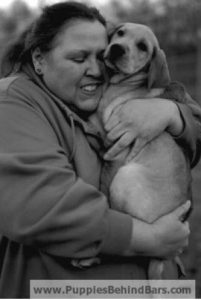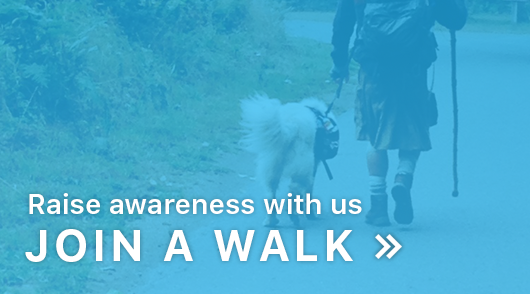March 23rd is National Puppy Day! Established in 2006 by Colleen Paige, National Puppy Day is a day for all dog enthusiasts to celebrate puppies’ unconditional love and fawn over the undeniable cute furballs that bring so much joy into this world. It is also a day to help save orphaned puppies across the globe and educate people about puppy mills and their many horrors.
National Puppy Day Facts & Quotes
- There are approximately 500-600 million dogs, including strays, throughout the world.
- In the USA, it is estimated that 2.11 million puppies are sold from puppy mills.
- Puppies Behind Bars is a training program that helps inmates to raise service dogs in prisons.
- Puppy mills are commercial dog-breeding organizations that focus on profit, while ignoring the health and welfare of the animals. 3 million puppies are killed in puppy mills because they are too full and not enough have found homes.
National Puppy Day Top Events and Things to Do
- Visit an animal shelter and adopt a puppy in need. Most cities have a local shelter where you can visit and adopt a pet in the same day.
- Spread awareness by using the hashtags #nationalpuppyday and #puppyday on social media and also share pictures of your dog or pictures of dogs you like.
- Watch the documentaries Dog By Dog, Madonna of the Hills and I’m Alive to learn more about the realities of puppy mills.
- Share a picture of your puppy (or dog as a puppy) on our Facebook page
- Donate your time or money to a local animal shelter or an organization that supports stray animals. There is always a need for help walking, feeding, playing with and cleaning up after the animals.
About Puppies Behind Bars
Puppies Behind Bars (PBB) trains prison inmates to raise service dogs for wounded war veterans and explosive-detection canines for law enforcement. Puppies enter prison at the age of 8 weeks and live with their inmate puppy-raisers for approximately 24 months. As the puppies mature into well-loved, well-behaved dogs, their raisers learn what it means to contribute to society rather than take from it. PBB programs bring the love and healing of dogs to hundreds of individuals every year. The dogs bring hope and pride to their raisers, and independence and security to those they serve.
History
A New Leash on Life
I [Gloria Gilbert Stoga] started Puppies Behind Bars (PBB) in July 1997, after reading about a prison/guide dog program that was started in Gainesville, Florida, by a veterinarian named Dr. Thomas Lane. Dr. Lane started the first prison/guide dog program in the country, and I thought – and still think – that he was brilliant for coming up with the idea.

I visited Dr. Lane and three prisons where his program existed. I spoke with inmates, with prison staff, and with the people who ran the program in those prisons and came away with ideas about what worked really well and what I might change if I were to start my own program. Armed with my information and ideas, I went up to Albany to meet with the Commissioner of the Department of Correctional Services, to ask if I might “put puppies in your prisons.” Incredibly lucky for me, not only did the Commissioner (at that time it was Glenn Goord, who retired in 2006 and subsequently served as the chairman of Puppies’ board of directors) believe in rehabilitation and education for the inmates in New York State prisons, but he, himself, had a yellow Labrador retriever – exactly the breed I wanted to use for Puppies Behind Bars.
We started in the Bedford Hills Correctional Facility for Women – New York’s only maximum-security prison for women – with classes commencing the first week in October. Two puppies entered seven weeks later and by January 1998, we had five Labrador retriever puppies living in the prison, being nurtured, loved, and trained by ten female inmates.

At that time we were teaching the dogs basic obedience and socializing them to the world at large, getting them ready to go into formal training at guide dog schools. The dogs were with us for approximately one year. Never, in my wildest imagination, did I think that Puppies Behind Bars would turn into anything but a program where we raised guide dog puppies for guide dog schools. But the terrorist attacks of September 11, 2001 changed everything. As a New Yorker who lived through them and saw what extraordinary work all sorts of law enforcement agencies did to keep our city and country safe, there was no real way to thank them except to start raising explosive-detection canines (EDCs) who could help them do their jobs. So by May 2002, we expanded into raising EDCs, with the first of them entering the Edna Mahan Correctional Facility in New Jersey in June of that year. I am proud to say that since then we have raised more than 400 EDCs, who have done everything from “sweep” both Democratic and Republican presidential conventions, marched up Pennsylvania Avenue during presidential inaugurations, checked Super Bowl stadiums before fans arrived, and even, sadly, been on hand in the aftermath of the Boston Marathon bombings. Our explosive detection canines work all over this country, and at U.S. Embassies abroad, to try to keep us all safe.
From 2002 on, we raised both guide dogs and EDCs, but in 2006, in response to the number of men and women coming home wounded from Iraq and Afghanistan, the board of directors and I decided to stop raising guide dogs and instead start raising service dogs that we would donate to the men and women who fought in those wars. It was a steep learning curve for us. Not only did we become responsible for all aspects of the dogs’ training – we teach our dogs 90 commands – but we also decided to find, train, and pair the wounded service members with our dogs; in other words, we decided to be fully responsible for all aspects of the dogs’ training and their future lives with service members.

We made a lot of mistakes in the early years of service dog training, but we were willing to learn from those mistakes in order to improve constantly the dogs that we were preparing for a life of service. Thus far we have raised well over 100 service dogs and all of us at Puppies Behind Bars believe fully that our dogs are the best. We take enormous pride in the dogs, that we donate to wounded war veterans. We take enormous pride in the training that we give those veterans (since 2008, we started bringing the vets into prison so they can be trained directly by the inmates who are raising the dogs), and we take enormous pride in the follow-up we do with our vets and dogs for the life of the dogs.
At Puppies Behind Bars, we believe that dogs can change lives. Our dogs can change the lives of prison inmates who have built walls around their emotions in order to survive in prison. Our dogs can change the lives of law enforcement agents who are looking for hidden explosives and know that the noses on their canine companions are the surest ways to find something, and they can change the lives of wounded war veterans for whom, in many cases, war has come to feel normal while being home has felt very scary.
– Gloria Gilbert Stoga, President and Founder









